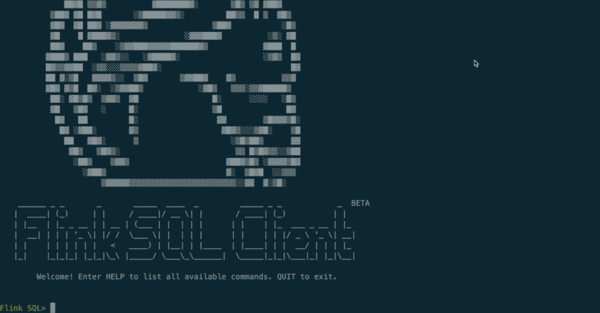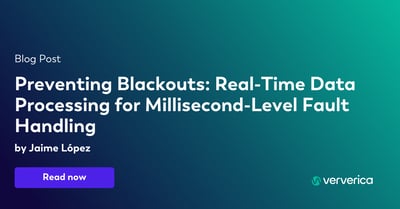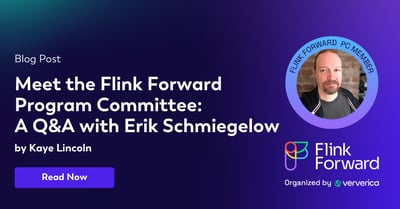Apache Flink 1.5.0 Release Announcement
This post originally appearedon the Apache Flink blog.It was reproduced here under the Apache License, Version 2.0.
The Apache Flink community is thrilled to announce the 1.5.0 release. Over the past 5 months, the Flink community has been working hard to resolve more than 780 issues. Please check thecomplete changelog for more detail.
Flink 1.5.0 is the sixth major release in the 1.x.y series. As usual, it is API-compatible with previous 1.x.y releases for APIs annotated with the @Public annotation.
We encourage everyone to download the release and check out the documentation.
Feedback through the Flink mailing lists or JIRA is, as always, very much appreciated!
You can find the binaries on the updated Downloads page on the Flink project site.
Flink 1.5 - Streaming Evolved
We believe that the field of stream processing, and Apache Flink with it, is taking another major leap at the moment. Stream Processing is not just faster analytics and a more principled way of building fast continuous data pipelines. Stream Processing is becoming a paradigm to build data-driven and data-intensive applications - it brings together data processing logic and application/business logic.
To help users realize the potential of this change, we spent a lot of effort in this release to rework some fundamental pieces of Flink. We want Flink to feel natural to users who do data engineering / data processing, as well as users who build data/event-driven applications (and of course those who combine both aspects inside their applications). This is an ongoing journey, but here are the first steps on this way:
-
We have redesigned and reimplemented large parts of Flink's process model. This effort has been tracked under the name FLIP-6. While not all is completed yet, the changes in Flink 1.5 enable more natural Kubernetes deployments and switch to HTTP/REST for all external communication (to naturally interact with service proxies). Simultaneously, Flink 1.5 simplifies deployments on common cluster managers (YARN, Mesos) and features dynamic resource allocation.
-
Streaming broadcast state (FLINK-4940) connects a broadcasted stream (e.g., context data, machine learning models, rules/patterns, triggers, ...) with other streams that may maintain (large) keyed state, such as feature vectors, state machines, etc. Prior to Flink 1.5, such use cases could not be easily built.
-
To improve support for real-time applications with tight latency constraints, we made major improvements to Flink’s network stack (FLINK-7315). Flink 1.5 achieves even lower latencies while maintaining a high throughput. In addition, we improved checkpoint stability under backpressure.
-
As users build larger applications, the size of state maintained inside Flink grows. Local state recovery (FLINK-8360) significantly reduces the time to recover an application with large state from a failure.
-
Streaming SQL is more and more recognized as a simple and powerful way to perform streaming analytics, build data pipelines, do feature engineering, or incrementally keep applications updated on changing data. We added a SQL CLI for streaming SQL queries (FLIP-24) to make this feature easier to get started with.
We describe the new features in Flink 1.5.0 in more detail below.
New Features and Improvements
Rewrite of Flink’s Deployment and Process Model
The rewrite of Flink’s deployment and process model (internally known as FLIP-6) has been in the works for more than a year and was a substantial effort from the Flink community. Many contributors from several organizations, such as data Artisans, Alibaba, and Dell EMC, collaborated on the design and implementation of this feature, which has been the most significant improvement of a Flink core component since the project’s inception.
In a nutshell, the improvements add support for dynamic resource allocation and dynamic release of resources on YARN and Mesos schedulers for better resource utilization, failure recovery, and also dynamic scaling. Moreover, deployments on container management infrastructures like Kubernetes have been simplified and all requests to the JobManager now happen through REST. This includes job submission, cancellation, requesting job status, taking a savepoint, and so on.
The work also builds the foundation for future improvements of Flink’s integration with Kubernetes. In a later version it will be possible to dockerize jobs and deploy them in a natural way as part of the container deployment, i.e., without starting a Flink cluster first. In addition, the work is a big step towards support for applications that are able to automatically adjust their parallelism.
Note that Flink’s programming APIs are not affected by these improvements.
Broadcast State
Support for a broadcast state, i.e., state that is replicated across all parallel instances of a function, has been a frequently requested feature. Typical use cases for broadcast state involve two streams, a control or configuration stream that serves rules, patterns, or other configuration messages and a regular data stream. The processing of the regular stream is configured by the messages of the control stream. By broadcasting rules or patterns to all parallel instances of a function, they can be applied to all events of the regular stream.
Of course, a broadcasted state can be checkpointed and restored just like any other state in Flink with exactly-once state consistency guarantees. Moreover, broadcast state unblocks the implementation of the “dynamic patterns” feature for Flink’s CEP library.
Improvements to Flink’s Network Stack
The performance of a distributed streaming application heavily depends on the component that transfers events from one operator to another via a network connection. In the context of stream processing, two performance metrics, latency and throughput, are important.
For Flink 1.5, the community worked on two efforts to improve Flink’s network stack, credit-based flow control and improving the transfer latency. Credit-based flow control reduces the amount of data “on the wire” to a minimum while preserving the a high throughput. This significantly reduces the time to complete a checkpoint in back pressure situations. Moreover, Flink is now able to achieve much lower latencies without a reduction in throughput.
Task-Local State Recovery
Flink’s checkpointing mechanism writes copies of an application’s state to a remote, persistent storage and loads it back in case of a failure. This mechanism ensures that state is not lost when an application fails. However, in case of a failure, it might take a while to load the state from the remote storage to recover the application.
Improving the checkpointing and recovery efficiency is an ongoing effort in the Flink community. Prominent features of previous releases were asynchronous and incremental checkpointing. In this release, we improved the efficiency of failure recovery.
Task-local state recovery leverages the fact that a job typically fails due to a single crashed operator, TaskManager, or machine. When writing the state of operators to the remote storage, Flink can now also keep a copy on the local disk of each machine. In case of failover, the scheduler tries to reschedule tasks to their previous machine and load the state from the local disk instead of the remote storage, resulting in faster recovery.
Extending Join Support for SQL and Table API
With the 1.5.0 release, Flink adds support for windowed outer equi-joins. Queries like the one shown below allow for joining of tables on bounded time ranges in both event-time and processing-time.
SELECT d.rideId, d.departureTime, a.arrivalTime
FROM Departures d LEFT OUTER JOIN Arrivals a
ON d.rideId = a.rideId
AND a.arrivalTime BETWEEN
d.deptureTime AND d.departureTime + '2' HOURS
For cases where two streaming tables should not be joined within a bounded time interval, Flink SQL also now supports non-windowed inner joins. This enables full-history matching, which is common in many standard SQL statements.
SELECT u.name, u.address, o.productId, o.amount
FROM Users u JOIN Orders o
ON u.userId = o.userIdSQL CLI Client
A few months ago, the community started an effort to add a service to execute streaming and batch SQL queries (FLIP-24). The new SQL CLI client is the first step of this effort and provides a SQL shell to run exploratory queries on data streams. The screenshot below shows the CLI client.

Various Other Features and Improvements
-
OpenStack provides software for creating public and private clouds on pools of resources. Flink now supports OpenStack’s S3-like file system, Swift, for checkpoint and savepoint storage. Swift can be used without Hadoop dependencies.
-
Reading and writing JSON messages from and to connectors has been improved. It’s now possible to parse a standard JSON schema in order to configure serializers and deserializers. The SQL CLI Client is able to read JSON records from Kafka.
-
Applications can be rescaled without manually triggering a savepoint. Under the hood, Flink will still take a savepoint, stop the application, and rescale it to the new parallelism.
-
Improved metrics for watermarks and latency. Flink now reports the minimum watermark in all operators, including sources. Moreover, the latency metrics were reworked for better integration with common metrics systems.
-
The FileInputFormat (and many derived input formats) now supports reading files from multiple paths.
-
The BucketingSink supports the specification of custom extensions for multiple parts.
-
The CassandraOutputFormat can be used to emit Row objects.
-
The Kinesis consumer allows for more customization.
Release Notes
Please review the release notes if you plan to upgrade your Flink setup to Flink 1.5.
List of Contributors
According to git shortlog, the following 106 people contributed to the 1.5.0 release. Thanks to all contributors!
Aegeaner, Alejandro Alcalde, Aljoscha Krettek, Andreas Fink, Andrey Zagrebin, Ankit Parashar, Arunan Sugunakumar, Bartłomiej Tartanus, Bowen Li, Cristian, Dan Kelley, David Anderson, Dawid Wysakowicz, Dian Fu, Dmitrii_Kniazev, Dyana Rose, EAlexRojas, Eron Wright, Fabian Hueske, Florian Schmidt, Gabor Gevay, Greg Hogan, Gyula Fora, Jark Wu, Jelmer Kuperus, Joerg Schad, John Eismeier, Kailash HD, Ken Geis, Ken Krugler, Kent Murra, Leonid Ishimnikov, Malcolm Taylor, Matrix42, Michael Fong, Michael Gendelman, Moser Thomas W, Nico Kruber, PJ Fanning, Patrick Lucas, Pavel Shvetsov, Phetsarath, Sourigna, Philip Luppens, Piotr Nowojski, Qiu Congxian/klion26, Razvan, Robert Metzger, Rong Rong, Shuyi Chen, Stefan Richter, Stephan Ewen, Stephen Parente, Steven Langbroek, Thomas Weise, Till Rohrmann, Timo Walther, Tony Wei, Tzu-Li (Gordon) Tai, Ufuk Celebi, Vetriselvan1187, Xingcan Cui, Xpray, Yazdan.JS, Zhijiang, Zohar Mizrahi, aria, biao.liub, binlijin, davidxdh, eastcirclek, eskabetxe, gyao, hequn8128, hzyuqi1, ifndef-SleePy, jparkie, juhoautio, kkloudas, maqingxiang-it, maxbelov, mayyamus, mingleiZhang, neoremind, nichuanlei, okumin, shankarganesh1234, shuai.xus, sihuazhou, summerleafs, sunjincheng121, triones.deng, twalthr, uybhatti, vinoyang, wenlong.lwl, yanghua, yew1eb, yuemeng, zentol, zhangminglei, zhouhai02, zjureel, 军长, 金竹, 王振涛, 陈梓立.

You may also like

Preventing Blackouts: Real-Time Data Processing for Millisecond-Level Fault Handling
Leverage real-time data processing for instant power outage detection. Im...

Real-Time Fraud Detection Using Complex Event Processing
Real-time fraud detection with Complex Event Processing helps identify su...

Meet the Flink Forward Program Committee: A Q&A with Erik Schmiegelow
Discover insights from Erik Schmiegelow of Hivemind on the importance of ...

Meet the Flink Forward Program Committee: A Q&A with Yuan Mei
Discover Yuan Mei's insights on streaming data, state management, and the...















